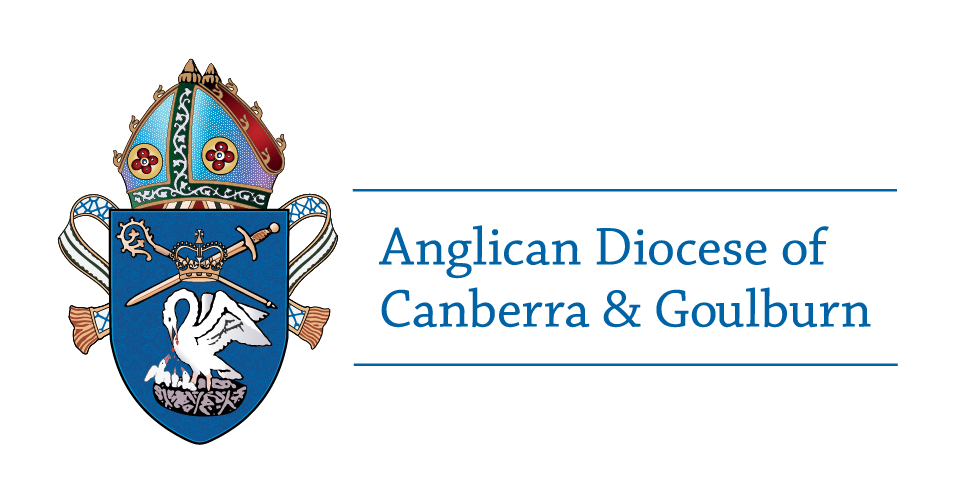St John’s Schoolhouse in 2022 is a well-preserved but modest little building, which greets you as you drive off Constitution Avenue in Reid, and up the hill to the heritage precinct of the Church of St John the Baptist. Both the Church and the neighbouring Schoolhouse date back to 1845, and both were built by the Campbell family on their Duntroon estate, to cater to the spiritual and educational needs of the scattered pastoral community of the surrounding Limestone Plains.
While the School was established at the instigation of Charles Campbell, it was also subject to Government oversight, such as that decreed in the Public Schools Act of 1866, and the Public Instruction Act of 1880; however, its close proximity to the Church, and the involvement of several schoolmasters and families in the Parish of St John the Baptist, created a close connection to the Church, which continues to this day. Pupils attending the Schoolhouse came from several Christian denominations, a fact which is acknowledged today in the provision for multi-denominational representation on the Schoolhouse Museum Board.
For over 60 years teachers in the little Schoolhouse provided a valuable ‘3 R’S’ education to rural children from surrounding farms. As the building also offered a sizeable attached residence, one can imagine the Schoolmaster at St John’s also played a significant role in the community. However, by 1907 declining pupil numbers saw the closure of the School on this site.
The Australian scene was also changing, with the Federation of the Australian colonies in 1901, and the consequent search for a site for the Federal capital. The announcement of Canberra as that site saw the gradual resumption of the 19th Century pastoral lands and changing land use, such as the establishment of the Military College at Duntroon in 1911. Interestingly, it seems that the existence of the small English-style church of St John the Baptist played some part in the Senators’ selection of the Capital site.
Very slowly, from its collection of city foundation stones and the building remnants of the pastoral era, Canberra gradually morphed into the Federal Capital we know today. Through it all, the Schoolhouse managed to survive, though its days were once numbered. As Canberra grew the little building, conveniently adjacent to the Church, continued to be part of the community. Varied uses of the old building included rental accommodation, a base for scouting activities (Canberra’s third scout troop met there, an Anglican troop called ‘St John’s Own’), a place for Sunday School and church breakfast gatherings. Most intriguingly, in 1927, it was used to display an exhibition of St John’s Church memorabilia, called ‘Relics of the Old Church’. Apparently this was visited by the Duke and Duchess of York, who were in the infant capital to open the Provisional Parliament House. This must have caused considerable excitement for the curators of the little exhibition, and one imagines the building was spruced up for this grand occasion in its history.
Nevertheless, the Schoolhouse was still marked for demolition, and might well have gone the way of many grander buildings, such as the Glebe House Rectory, which was knocked down for a road. The dismay that this destruction caused in historically-aware circles, and the timely transfer of the Schoolhouse land to the Parish to provide space for the 1957 Parish Centre, ultimately saved the historic little structure.
People of expertise and influence, some of whom were St John’s parishioners, banded together to save and restore the building. With support from both the Diocese and the National Capital Development Commission, funding was provided and plans drawn up to restore and preserve the Schoolhouse as a Museum, which would serve the wider community.
In 1969, Neil Armstrong landed on the Moon, and images were transmitted to Earth via the Honeysuckle Creek Tracking Station. On the 26th October of that same year, back on Planet Earth, the newly restored St John’s Schoolhouse entered a new era, as a Museum of local education and history, when it was opened by Sir John Overall, CBE, MC, Commissioner for the NCDC. The official opening was marked by the striking of the School bell, the triangle at the entrance to the Museum.
A constituted Ecumenical Board of Management was appointed to run the Museum, in acknowledgement of the Schoolhouse’s past and continuing wider involvement in the community.
St John’s Schoolhouse Museum in 2022 continues to welcome schoolchildren and people of all ages to learn about the colonial history of this region.
The information for this article is sourced from Hope Hewitt’s excellent book Canberra’s First Schoolhouse, published by the Schoolhouse Museum Board of Management in 1987.
by Jennifer Garden, for St John’s Schoolhouse Museum
This above photo was taken on 15 March 2020,to mark the occasion of the 50th Anniversary of the Schoolhouse as a Museum.
L to R: Mr Curtis Campbell, Bishop Mark Short, Mrs L Hurley, the then Rector of St John’s Paul Black and Dr Monica Short


